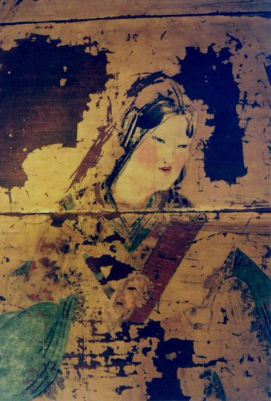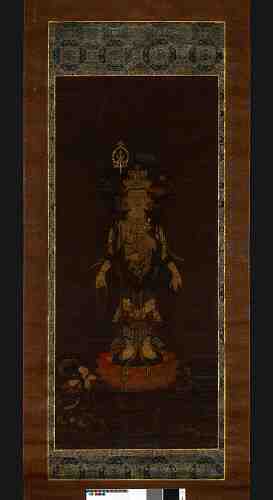Art of Japan and Kose Kanaoka: Illusive Spirit of a Ninth Century Artist and the Middle Kingdom
Lee Jay Walker
Modern Tokyo Times

Tragically, a fire in the seventeenth century destroyed the last known documented art piece by Kose Kanaoka. It is known that Kose Kanaoka was born in the early ninth century and that the styles of art emanating from the Tang Dynasty enriched his soul. Of course, the Middle Kingdom (China) influenced Japan enormously in many realms over countless centuries. Therefore, the high culture of Japan utilized key cultural aspects of the Middle Kingdom even if independent Japanese concepts naturally emerged.
It is difficult to write enormously about Kose Kanaoka because not only was his last documented piece of art destroyed by fire but also, equally important, many attributes have been made to this esteemed artist. Hence, more fog descends surrounding the artwork of Kose Kanaoka based on the enormous homage provided to him.
In time, Kose Kanaoka moved further away from the styles of the Tang Dynasty but obviously, the richness of culture emanating from the Middle Kingdom always stayed within his artistic soul. Hence, it is said that he created a uniquely Japanese style of art that enabled other court artists to bloom in the ninth century. Equally, his landscapes and depictions of animals brought Kose Kanaoka much esteem.

The Britannica says, “It is said that his lines, although thin and delicate, possessed much strength and vitality and that his horses and dragons were so realistic that they seemed to come to life and escape from the paintings.”
The above comment ties in with the inquisitive nature of Kose Kanaoka. Also, his free-thinking nature – despite natural stratification related to court artists and the growing influence of Buddhism – means that his secular approach to art is visible.
In another article, I state, “It is known that Kose Kanaoka focused on animals, official portraits, and landscapes. Equally important, the richness of Kose Kanaoka and his pupils enabled the yamato-e style to emerge. Also, the Tosa School of art can be linked to the Kose School based on Kinmochi, a student of Kose Kanaoka, teaching Motomitsu Kasuga. Therefore, culturally, his legacy is immense and the same applies to moving to Japanese styles, unlike the past that focused on the Middle Kingdom of China.”

Overall, Kose Kanaoka utilized the patronages of Emperor Uda (867-931), Mototsune Fujiwara, and others related to the upper echelon of Japanese society. Hence, the flows of Buddhism, Confucianism, and high culture emanating from the Middle Kingdom blessed him greatly.
https://www.britannica.com/biography/Kose-Kanaoka

Modern Tokyo News is part of the Modern Tokyo Times group
DONATIONS to SUPPORT MODERN TOKYO TIMES – please pay PayPal and DONATE to sawakoart@gmail.com
http://moderntokyotimes.com Modern Tokyo Times – International News and Japan News
http://sawakoart.com – Sawako Utsumi personal website and Modern Tokyo Times artist
https://moderntokyonews.com Modern Tokyo News – Tokyo News and International News
http://global-security-news.com Global Security News – Geopolitics and Terrorism
PLEASE JOIN ON TWITTER
https://twitter.com/MTT_News Modern Tokyo Times
PLEASE JOIN ON FACEBOOK